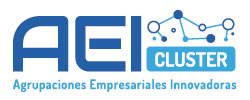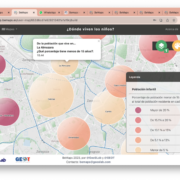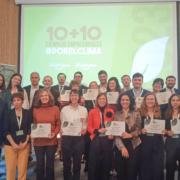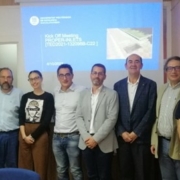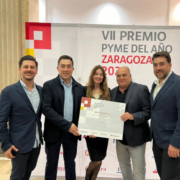Cutting-edge innovation in the water technology sector: 4 collaborative industrial research projects successfully completed
These projects bring together 13 companies, 12 of which are SMEs, 1 technology centre and 3 other clusters, in addition to ZINNAE. In this way, the collaboration between all these agents makes it possible to address the main water challenges in industry, in wastewater treatment plants and in the environment.
In industry, the BODEGAS 4. 0-Phase 2 (ACAI DEPURACIÓN, VELABER CONSULTING, INAR TECNOLOGÍAS Y SOLUCIONES, BODEGAS ARAGONESAS, BODEGAS GRUPO YLLERA, VITARTIS) and BIO-H2-Phase 2 (INGEOBRAS, DAB BIOTECNOLOGÍA, GRUPO TÉCNICO RIVI) have implemented artificial intelligence to, respectively, optimise processes involving water use in a winery, and develop a biological green H2 generation system using organic matter from wastewater as a substrate. BODEGAS 4.0 has addressed the analysis and improvement of wineries’ capacities in terms of optimising the water cycle, improving water reuse levels and reducing operation and maintenance costs. The project has made it possible to reduce the water costs of the winemaking process, increase the response of the wineries (digitalisation and LEAN WATER), and increase the quality of the output water (pilot plants) to levels of reuse, completing a circular economy scheme. At the same time, BIO-H2 has been proposed as an economical and modular solution that allows the recovery of wastewater in industry, especially if it contains a high concentration of sugars in its effluents, as is the case in the food industry. The objective of BIO-H2 in this second phase has been the biological production of green hydrogen using wastewater as a raw material. BIO-H2 has achieved waste valorisation and a complete circular economy with an energy generation cost of almost zero if we consider the reduction of purification costs.
In this way, these two projects have reduced environmental impact and increased industrial competitiveness.
In terms of wastewater treatment plants, the DTCONEDAR project (ELECTROINGENIERÍA INDUSTRIAL XCLX, NABLADOT, DIAMA, FACSA, CLENAR) has focused on the development of a hybrid digital twin to carry out a more efficient control of the main water treatment processes in WWTPs, tertiary treatment (during phase 1) and secondary treatment (phase 2), focusing on energy efficiency and the improvement of pollutant removal performance. DTCONEDAR has improved the energy efficiency of tertiary treatment based on UV lamps thanks to the development of a hybrid digital twin by means of a fast response simulator.
Finally, the DIGIT-BALSA project (CANTERAS DE EJEA, EUPLA, INGEOBRAS, i+Porc, and the collaboration of TECNALIA) has applied a monitoring system for the early detection of leaks in ponds through an innovative technological solution based on the use of fibre optics as a distributed sensor deployed in the pond itself. After a first phase of experimental tests in the laboratory, the project has installed and tested the monitoring system in a prototype pond created within the framework of the project with the aim of acquiring knowledge about good practices in the use of this technique and its potential replicability. In this way, DIGIT-BALSA avoids the environmental and structural impacts associated with seepage of slurry flows, with direct environmental benefits associated with the good quality of the state of surface and groundwater.
All these developments seek to promote the efficient use of water and energy in Spain, to promote the digitalisation and efficiency of processes, and to provide new tools for the efficient and integrated management of water, in all cases reducing the environmental impact.

